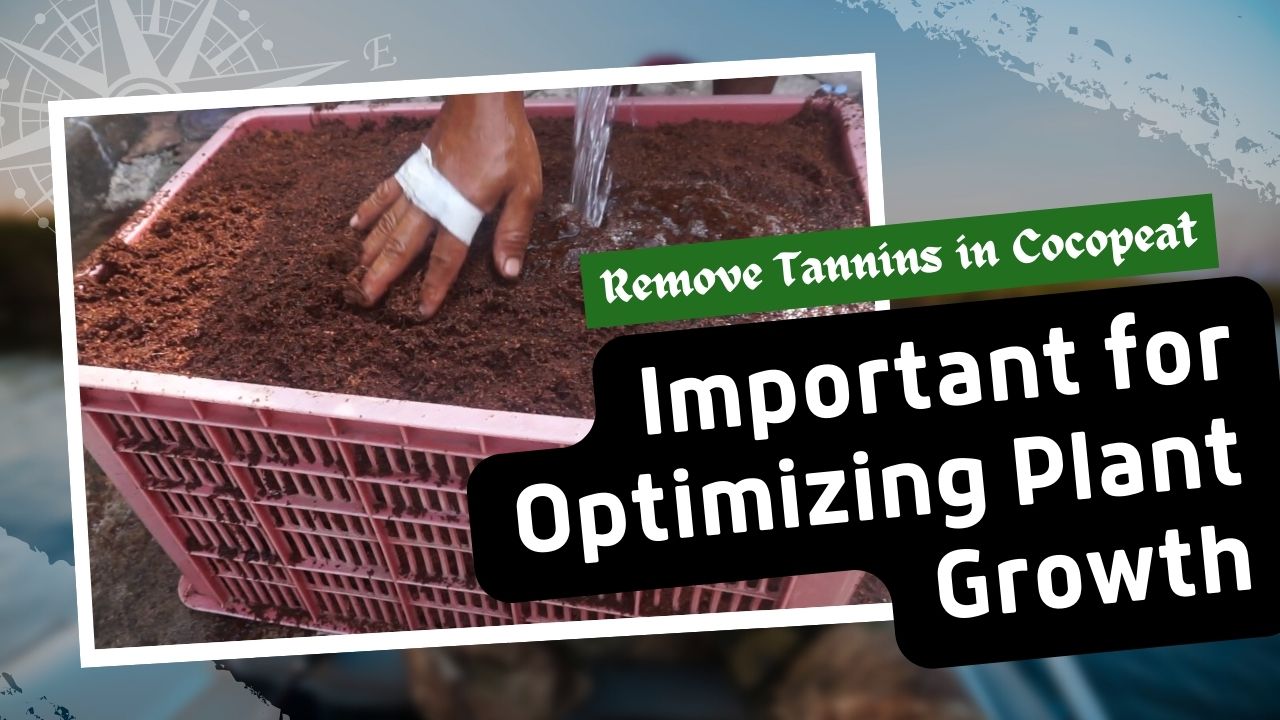Cocopeat is one of the organic ingredients that is widely used in the world of agriculture because of its enormous benefits and role and supports organic farming activities, be it vegetable farmers, hydroponic farmers, or ornamental plant hobbyists. However, before use, the coconut fiber must be cleaned of the tannins contained in it so that the coconut fiber is safe to use, considering that the tannin substance can actually inhibit plant growth.
Tannins are one of the compounds found in coconut fiber which are classified as anti-nutritional compounds. These anti-nutritional compounds are compounds that inhibit the absorption by plants of the nutrients available in the growing media so that their presence can inhibit plant growth. Due to the presence of these tannins, plants cannot absorb the nutrients in the growing media or in the soil because they are blocked by these tannins.
Here is how to process cocopeat to remove agricultural substances
- Prepare tools and materials such as cocopeat, sacks, and small baskets.
- Cut the sack and then place it on a small basket, which functions as a filter.
- Check the sack by watering it using running water to ensure safe drainage.
- Put the cocopeat in a small basket that has been lined with sacks.
- Flushing cocopeat using running water evenly while kneading and stirring, until the used water is colorless or clear.
- Do this repeatedly to remove tannins.
- Close the cocopeat by using the end of the sack until it is completely closed.
- Put the cocopeat for about 2 days in the shade with an inclined position so that the water runs out quickly.
There are at least 5 ways, here is an explanation.
- Leave the coconut husk out in the open so that it is exposed to rain and sunlight for a few days, then hang it in the sun to dry
- Soak the coconut coir in running water, cut the coir into several pieces, put it in a bucket and place it under the faucet and run the water until it's clean for at least 1 day. Or an easier way is to put coconut fiber in a sack and put it in a flowing river.
- Soak the coconut husks in water in a bucket, but when soaking is added alum in the water. This alum functions to remove the tannins in the coconut coir and after the tannins come out, discard the water and the coconut coir is ready to use. Alum can be used in the form of lumps or also in powder form.
- Boil the coconut coir for 2-3 hours, then drain the water and then apply a fungicide or antifungal to the coir, such as Antracol or others.
- Fermenting coconut coir using rice washing water, sugar, and tape yeast. The trick is to soak the chopped coconut coir into the rice washing water, add 10 tablespoons of sugar (for 10 liters of rice washing water), also add 3 grains of tape yeast then stir all the ingredients until evenly mixed then cover tightly and leave for 5-7 days. In this 5th way, we will get double benefits, namely in addition to sterile coconut coir from tannins for planting media, we also get POC from fermented coconut husks and rice washing water which have very high potassium nutrients and have growth hormones in the form of vitamins. B1 which comes from rice washing water. And even if we are lucky, soaking coconut coir using rice washing water can grow jakaba mushrooms.










 It doesn't matter that you want to become strong! There's no need to compare yourself to them! The others are themselves and you are yourself! The answer to your life are all within you!!
It doesn't matter that you want to become strong! There's no need to compare yourself to them! The others are themselves and you are yourself! The answer to your life are all within you!!
Keine Kommentare
Kommentar veröffentlichen